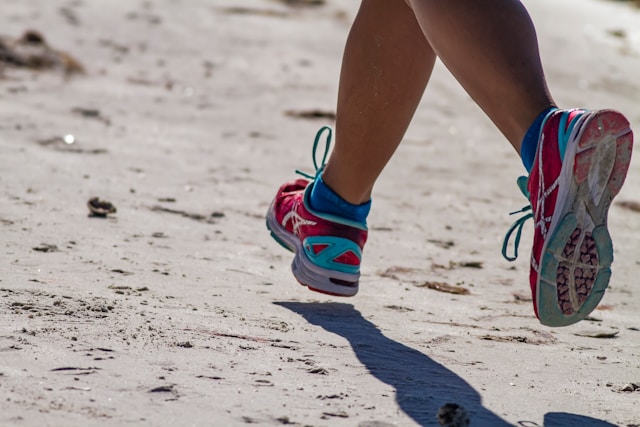When it comes to walking or running, the right pair of shoes can make all the difference. However, even the best shoes don’t last forever. Regularly changing out your walking and running shoes is crucial to prevent injury and keep your feet happy. Here’s why—and how often—you should swap out your footwear.
Why Change Your Shoes?
1. Cushioning Wears Out Over time, the cushioning in your shoes breaks down, providing less shock absorption. This can lead to increased impact on your joints and muscles, heightening the risk of injury.
2. Sole Degradation The soles of your shoes wear down with use, which can alter your gait and lead to uneven distribution of pressure. This imbalance can cause discomfort and injury, particularly in the knees, hips, and back.
3. Hygiene Old shoes can harbor bacteria and fungi, which can lead to foot problems like athlete’s foot. Regularly changing your shoes helps maintain foot hygiene.
4. Structural Support The structural support of your shoes diminishes over time, especially if you’re logging high mileage (yes that’s you, Wellthy Souler). Proper support is essential for maintaining correct alignment and preventing overuse injuries.
How Often Should You Change Your Shoes?
1. Mileage Matters A general rule of thumb is to replace your running or walking shoes every 300-500 miles. Personally I change my shoes every 400 miles. This range can vary based on your weight, gait, and the type of surfaces you walk or run on.
2. Visual Inspection Look for signs of wear and tear. If the treads are worn out, the midsole feels compressed, or the shoes are causing discomfort, it’s time for a new pair.
3. Listening to Your Body If you start experiencing unexplained aches and pains, it might be a sign that your shoes are no longer providing adequate support and cushioning. Often clients complain to me about shin splints and sore soles of the feet when it’s time to change out shoes.
Tips for Extending the Life of Your Shoes
1. Rotate Pairs Having multiple pairs of shoes and rotating them can extend their lifespan. This gives each pair time to decompress and dry out between uses.
2. Proper Storage Store your shoes in a cool, dry place. Avoid leaving them in a hot car or damp area, as extreme temperatures and moisture can degrade materials faster.
3. Clean Them Regularly Clean your shoes to remove dirt and sweat, which can break down materials. Use mild soap and water, and avoid harsh chemicals.
Conclusion
Investing in good-quality walking and running shoes is essential at our age, but remember that they have a finite lifespan. Regularly changing out your shoes is a key strategy to prevent injuries, maintain comfort, and support your overall walking and running performance. If you are ready for a professional fitting, I went to Fleet Feet and had a free gate assessment and shoe fitting. The shoes were priced well and the pros in the store were helpful. Listen to your body, keep track of your mileage, and don’t hesitate to swap out your shoes when needed. Your feet—and your entire body—will thank you.
By prioritizing proper footwear maintenance, you’ll stay on track with your fitness goals, reduce the risk of injury, and enjoy a more comfortable, efficient stride. Happy walking and running!

